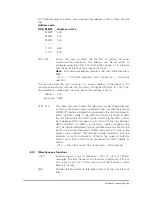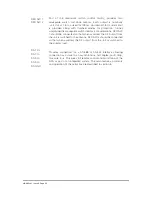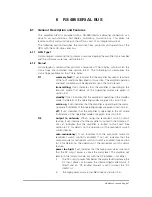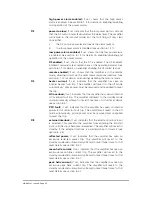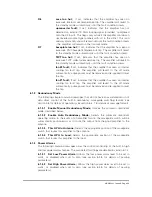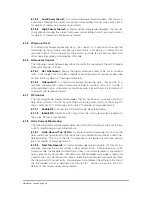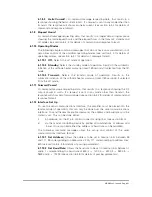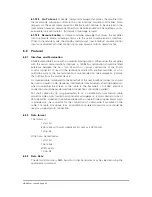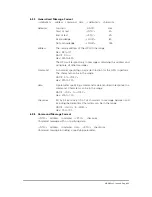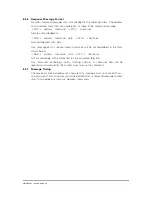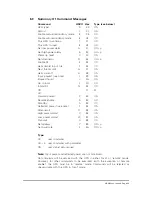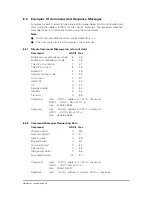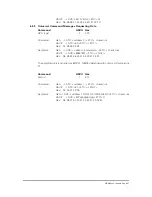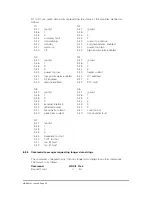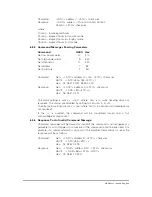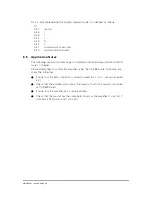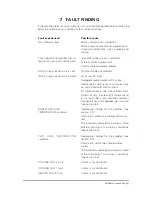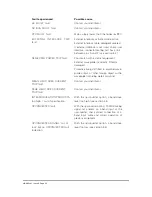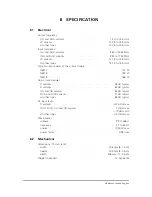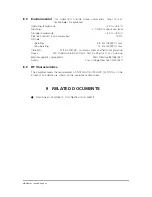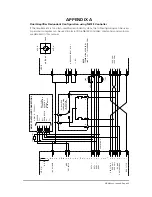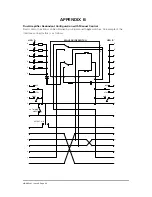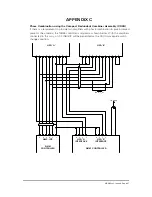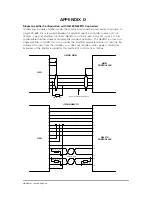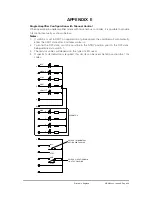
Command:
5
STX
4
address J
5
ETX
4
checksum
Response:
5
ACK
4
address J Tnnnnn Xnnnnn Snnnnn
Onnnnn
5
ETX
4
checksum
where:
Tnnnnn - total elapsed hours
Xnnnnn - elapsed hours in transmit mode
Snnnnn - elapsed hours in standby mode
Onnnnn - elapsed hours in off mode
6.4.5
Command Messages Passing Parameters
Command
ASCII Hex
Set low power alarm
A
41h
Set high power alarm
B
42h
Set attenuator
D
44h
Set address
Y
59
Set baud rate
Z
5A
Command:
Gen:
5
STX
4
address A=nnn
5
ETX
4
checksum
ASCII:
5
STX
4
5A=150
5
ETX
4
|
Hex:
02 35 41 3D 31 35 30 03 7C
Response:
Gen:
5
ACK
4
address A
5
ETX
4
checksum
ASCII:
5
ACK
4
5A
5
ETX
4
q
Hex:
06 35 41 03 71
The alarm setting is sent as ’=nnn’, where ’nnn’ is in watts (leading zeros not
required). The alarms are disabled by setting to zero (A=0, B=0).
The attenuator setting is sent as ’=nnn’ where ’nnn’ is in nominal units (leading zeros
not required).
If the ‘=’ is omitted, the command will be considered invalid and a ‘not
acknowledge’ response sent.
6.4.6
Response To An Invalid Command Message:
Command messages will be classed as invalid if the command is not recognised, a
parameter is out of range or not numeric or the command cannot be executed. For
example, if a command which is not part of the amplifier command set is used, the
response will be as follows:
Command:
Gen:
5
STX
4
address B
5
ETX
4
checksum
ASCII:
5
STX
4
5b
5
ETX
4
v
Hex:
02 35 42 03 76
Response:
Gen:
5
NAK
4
address B D1
5
ETX
4
checksum
ASCII:
5
NAK
4
5Bp
5
ETX
45
DC1
4
Hex:
15 35 42 70 03 11
HBN63xx-1, Issue 8, Page 39

